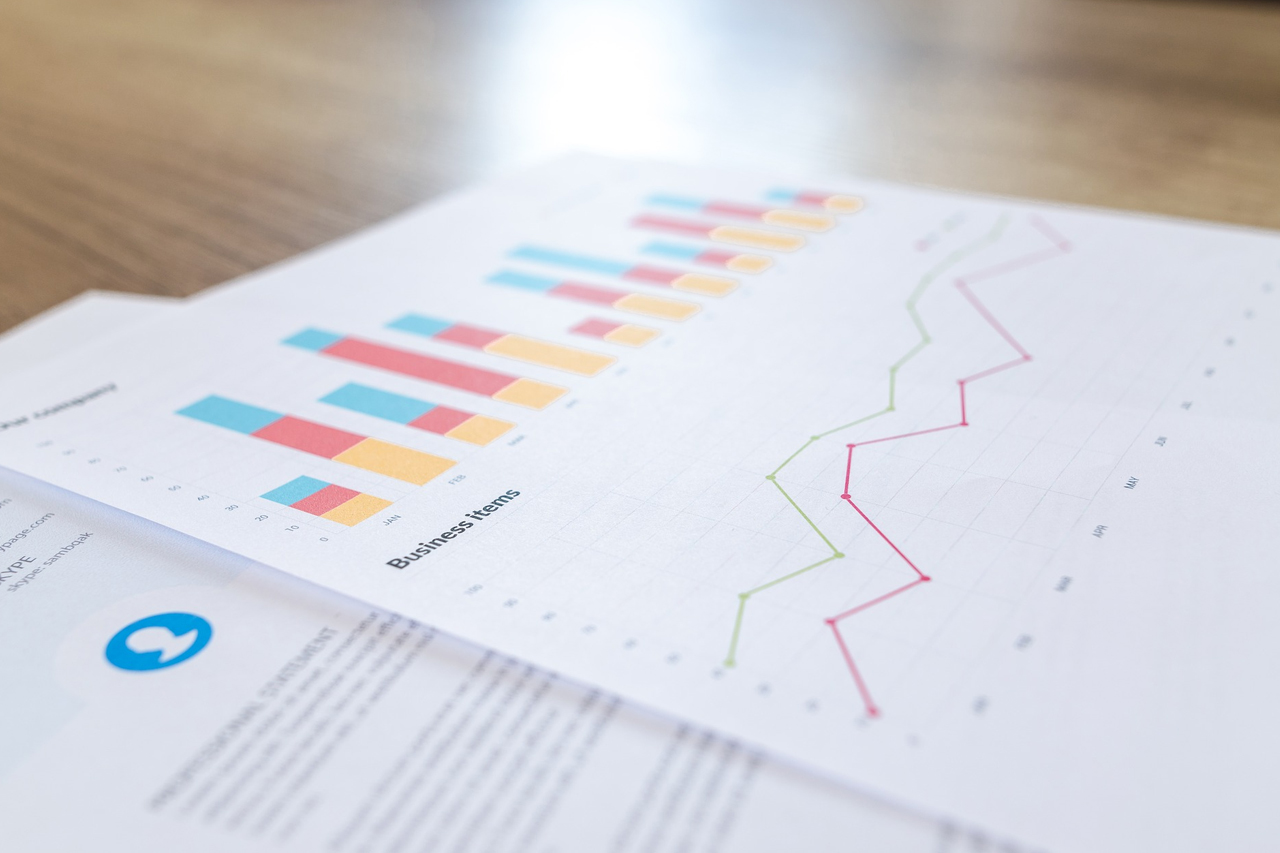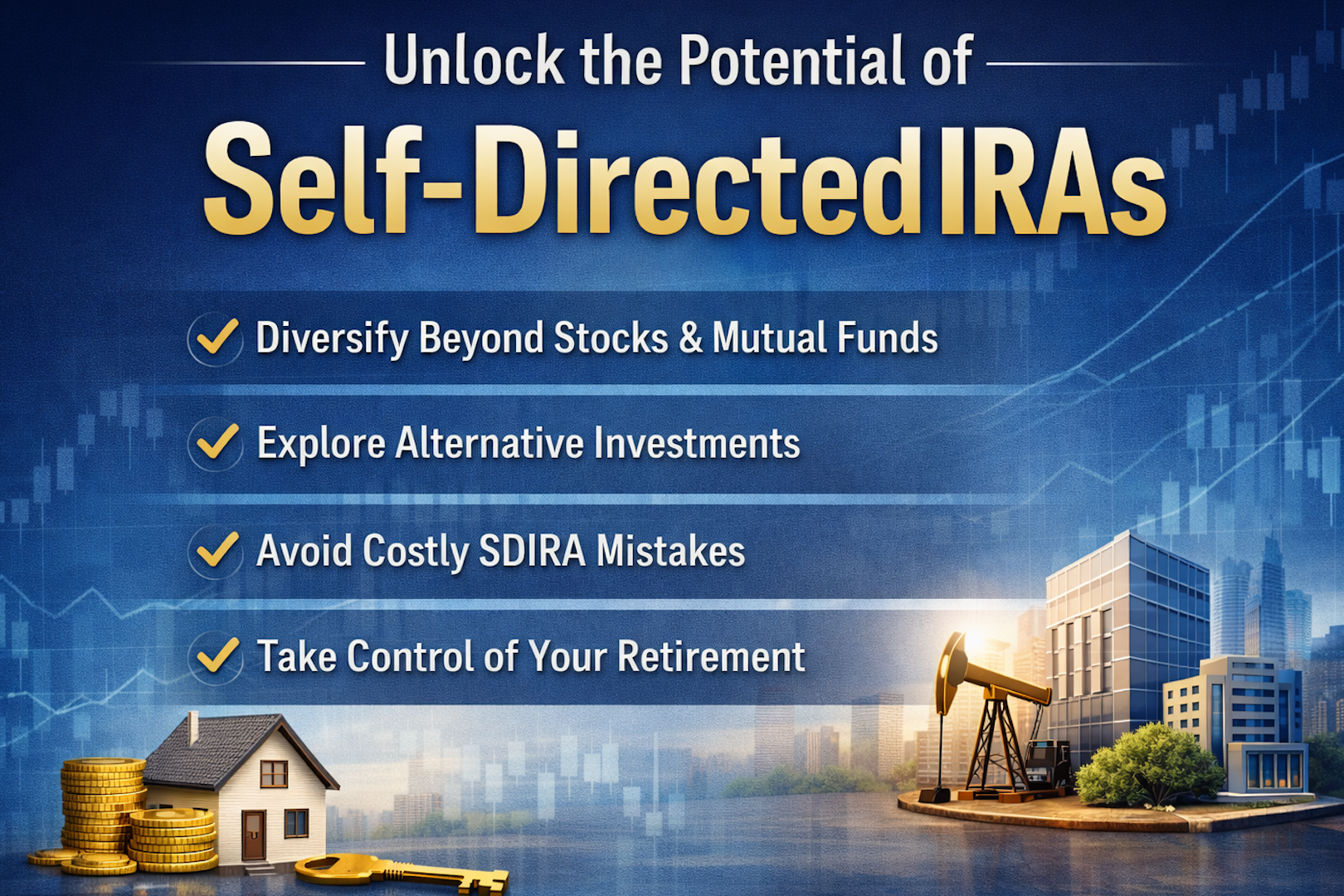An IRA is an excellent tool for building wealth for retirement, whether it’s your primary retirement account or used in conjunction with other vehicles, like a 401(k). When you choose a standard IRA, you automatically gain access to common assets, like stocks, bonds, and mutual funds.
These can serve as a solid base for growth and are an excellent option for individuals looking for a hands-off investment approach. However, there may be better options depending on your goals, risk tolerance, and retirement timeline.
Alternative assets, like real estate and private equity, can help you hedge against volatile markets while providing the potential for higher returns. These assets are only available to self-directed IRAs (SDIRAs), a type of retirement account that offers more control and greater flexibility, as long as you’re willing to manage your portfolio actively.
Here’s what you need to know about traditional and alternative assets, the accounts that hold them, and how to choose the best option for your goals.

Common Investment Options
Standard IRAs typically focus on conventional market-based investments that are widely available through banks, brokerages, and robo-advisors. These assets are generally liquid, regulated, and easy to monitor, making them a popular choice for new investors or those who want a more hands-off approach to their retirement savings.
Common traditional IRA investment options include:
- Stocks. Ownership in the shares of publicly traded companies. These offer long-term growth but can fluctuate with market volatility.
- Bonds. Fixed-income securities issued by the government or corporations. They are often used for capital preservation and a steady, reliable income.
- Mutual funds are pooled investment vehicles that hold a diversified collection of assets. They are professionally managed and great for portfolio diversification in managed accounts.
- Exchange-traded funds (ETFs). Similar to mutual funds but traded like stocks on an exchange. ETFs often have a lower fee and offer target investment opportunities in specific sectors or indices.
- Certificates of deposit (CDs). Time-based savings products issued by banks. CDs offer fixed returns but typically have early withdrawal penalties, making them slightly less liquid than other traditional assets.
Pros and Cons of Common Assets
While standard IRAs don’t allow for alternative assets like real estate or private placements, they’re still a reliable option for investors who prefer a more passive, regulated approach to retirement savings. Here are some pros and cons to keep in mind.
Pros
- Easy to manage through most financial entities, including banks and brokerage firms.
- Low barrier to entry, with minimal research, capital, or legwork required.
- Transparent pricing and performance data.
Cons
- Limited diversification, as you’re generally restricted to publicly traded assets.
- Market dependence, meaning your retirement account can suffer during market volatility.
- Lower potential returns compared to alternative assets
Alternative Asset Investment Options
Alternative IRA options, typically held in an SDIRA, allow investors to invest outside the stock market and common assets and explore a broader range of asset classes.
These investments often offer a higher potential for return paired with increased control and greater diversification. Alternative investments are usually best suited for experienced investors seeking to diversify their portfolios with a specific market niche or personal experience.
Common alternative IRA investment options include:
- Real estate. Includes direct ownership of residential, commercial, or undeveloped property. SDIRA real estate can offer income through rent and long-term appreciation, but also requires active management and due diligence.
- Private equity. Investments in privately held businesses or startups. These offer the potential for high returns but are generally illiquid and carry higher risk.
- Precious metals. Physical assets like gold, silver, platinum, and palladium. Often used as a hedge against inflation or economic downturns, though storage and custodian rules apply.
- Promissory notes. Private lending arrangements where the IRA holder acts as a lender and earns interest over time. These require careful underwriting to manage default risk.
- Tax liens and deeds. Investments in property tax debt sold by municipalities. These can generate interest income and sometimes lead to property ownership if the original owner fails to meet their repayment obligations.
- Cryptocurrency. Digital assets like Bitcoin and Ethereum. Crypto offers high-growth potential but is highly volatile and comes with regulatory uncertainty.
Alternative IRAs come with added responsibilities, including selecting a qualified custodian and ensuring compliance with IRS rules. However, when used meticulously, they can be powerful tools for portfolio diversification and wealth-building.
Pros and Cons
Alternative IRA investments can offer powerful diversification and higher return potential, but they also require more oversight and a deeper understanding of each asset class. Here are some pros and cons to consider.
Pros
- Broader diversification through assets not correlated with the stock market.
- Potential for higher returns, especially with real estate, private equity, or early-stage investments.
- Greater control over investment choices, often aligned with personal expertise or interests.
Cons
- More complex to manage, often requiring specialized knowledge or due diligence.
- Limited liquidity, as many alternative assets, like private equity or real estate, can’t be quickly sold or converted to cash.
- Strict regulatory rules, including IRS rules that prohibit certain types of transactions..
How to Open a Self-Directed IRA
If you’re interested in exploring alternative assets inside of an IRA, you’ll need to open a self-directed IRA using an IRS-approved custodian. Luckily, the process is easier than you think.
- Choose an SDIRA Custodian: Not all IRA custodians offer self-directed accounts. Look for one that specializes in alternative investments and understands IRS compliance.
- Open and Fund Your Account: You can fund your SDIRA via a rollover from an existing IRA or 401(k), or by making a new contribution (subject to IRS limits).
- Identify Your Investment: Once the account is active, you choose the alternative asset you want to invest in, such as real estate, private equity, or precious metals.
- Direct the Investment: Submit investment instructions to your custodian. The custodian will carry out the transaction but won’t give advice, so ensure your investment follows IRS rules.
- Maintain Records and Stay Compliant: It’s your responsibility to monitor the asset, keep accurate records, and avoid prohibited transactions that could trigger penalties or taxes.
Choosing Investments Right for You
After going over the pros and cons of both common and alternative assets, a solid choice would be to combine the efforts into one well-rounded portfolio. A mix of balanced and high-risk investments can push cash flow and build a comfortable nest egg for your future.
Using both assets in your portfolio can accumulate a higher net worth, while reaping the benefits they each have to offer. The best investment strategy is to remain vigilant and explore what the financial world can do for you and your future. Contact Horizon Trust today for a free consultation.
FAQs
How can I invest in alternative assets in a retirement plan?
To invest in alternative assets within a retirement plan, you’ll need to open a self-directed IRA (SDIRA). Unlike standard IRAs, SDIRAs are administered by custodians, who allow a broader range of investment options.
Once your SDIRA is funded, you can direct the custodian to purchase specific alternative assets on your behalf, following IRS rules and avoiding prohibited transactions.
What should I look for when evaluating an alternative investment opportunity?
Focus on key factors like the sponsor’s track record, the investment’s liquidity, fees, and overall risk. Make sure it complies with IRS rules for retirement accounts and always perform thorough due diligence.
Greg Herlean
Greg has personally managed over $1.4 billion in financial transactions via real estate investing and fixed and flipped over 450 homes and 2000 apartment units.
His aptitude for business has helped him to provide management direction, capital restructuring, investment research analysis, business projection analysis, and capital acquisition services.
However, these days he is mainly focused on being a professional influencer and educating investors about the benefits of using self-directed IRAs for tax-free wealth management. He is also a devout family man who enjoys spending his free time with his wife and children.
Greg Herlean’s journey started at 19 years old when he made a 2-year journey to Guayaquil, Ecuador, and volunteered to help less fortunate families. As a result, he learned many foundational lessons about faith, community, and hard work, which have helped him in his business success. Using these lessons, he was able to slowly build his wealth through real estate investing and establish Horizon Trust in 2011.
Related Posts
December 22, 2025
What Is a Self-Directed IRA? Is It Right for Me?
SDIRA account holders oversee their investment choices. Unlike the traditional…
December 9, 2025
What Is Self-Directed Investing: Your 5-Step Guide to Get Started
With careful planning, proper research, and a little advice, you can build a…



